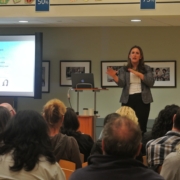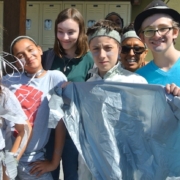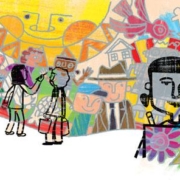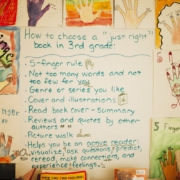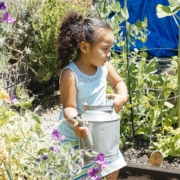By Katherine Campbell, K-5 Academic Learning Specialist
At The Berkeley School, we honor the whole child and recognize that all children develop at different rates. We also know that it is essential for all children to become proficient readers before third grade to ensure a lifelong love of learning. We use a variety of assessment tools with all children to monitor reading acquisition, and for those who are not yet meeting benchmarks, I provide additional support that is more tailored to individual needs. When children work with me, it does not necessarily mean they have a diagnosed learning difference. Some children just need an extra boost in reading, while others need a longer-term intervention. Either way, our goal is to provide all children the instruction they need to become strong readers.
Here are a few things that you may or may not know about learning how to read:
80% of all children learn to read with systematic classroom instruction at school and support at home. (We’ve got that covered at TBS.) We use Fundations (a phonics program), and Daily Five reading workshop in our 1st/2nd grade classrooms.
15-17% of all children need more explicit systematic small group reading instruction. These children, although they do not have a language-based learning difference, require more frequent practice in explicit reading instruction in order to learn to read. (This is where I come in.)
3-5% of all children have a diagnosable language based learning difference. (I work with these children, and we also utilize the expertise of outside assessments to determine best support.)
How do we determine which children will work with me?
In K-2nd, we use the DIBELS (Dynamic Indicators of Basic Early Literacy Skills) – a nationally normed reading assessment, the Fountas and Pinnell benchmark reading assessments, and the Words Their Way spelling inventory. If students score below grade-level benchmarks on any of these assessments, I will conduct an additional in-depth assessment called the CORE Reading Assessment. With this assessment I am able to determine a child’s specific areas of strengths and weaknesses in reading and create individualized reading lessons for each child. After a discussion with both teachers and parenting adults, I group 3-4 students with similar needs in a reading group and meet with them for 40 minutes 3 times per week in my office. At times, depending on areas of need, I may work with a child one-on-one.
How long do children work with me?
Children work with me until they reach grade-level reading benchmarks and are demonstrating confidence in the small group instruction and in the classroom. Depending on individual progress, this can take anywhere from 1 month to a few years.
When might a child begin working with me in the Learning Support office?
I start working with students in mid-year Kindergarten who are not yet meeting grade-level benchmarks. Kindergarten parents, please don’t panic! We do not expect children to be reading in January of Kindergarten, but we do want to make sure they have the support they need for a strong foundation in reading. Here are some of the Kindergarten skills we assess:
Do they know the names of the letters and the sounds they make?
Can they verbally identify and produce a rhyme?
Can they identify the beginning and ending sounds in a spoken word?
Can they segment a 3 or 4 letter word into individual sounds?
Can they sound out a 3 letter nonsense word and blend the sounds together? (n-o-p)
Do they recognize a few basic sight words? (the, and, a, I, he, she, you)
Can they orally break up a word into syllables? (bas-ket-ball)
If children are able to master these skills before the end of Kindergarten, they will be set up for success in reading in first grade.
Do students feel concerned if they work with me in the Learning Support office?
I can honestly say that in K-2, I do not perceive any negative stigma attached to going to my office. Children leap from their seats when I pick them up, eager to run to our lesson. Other children in the class are often begging me to take them too. My office is a safe, calm, fun place for kids to learn how to read and write.
